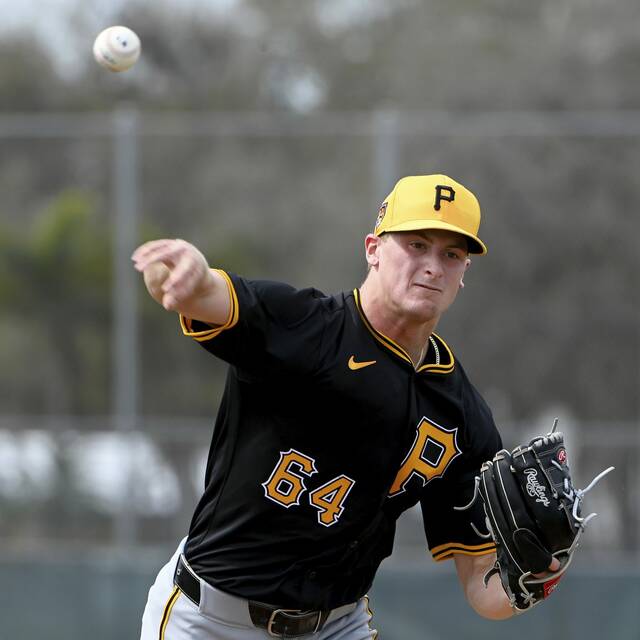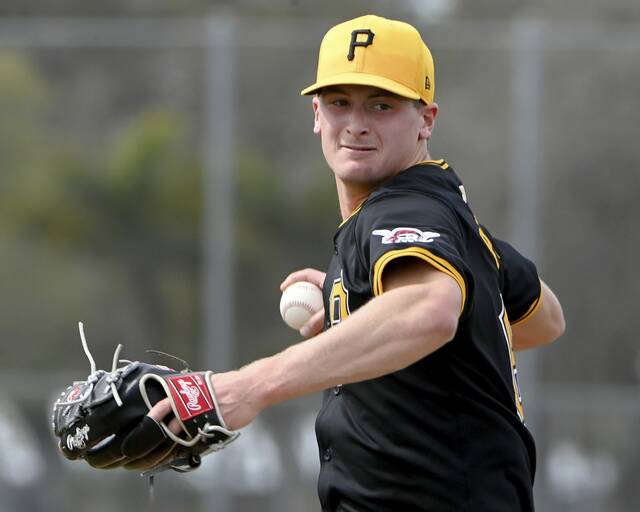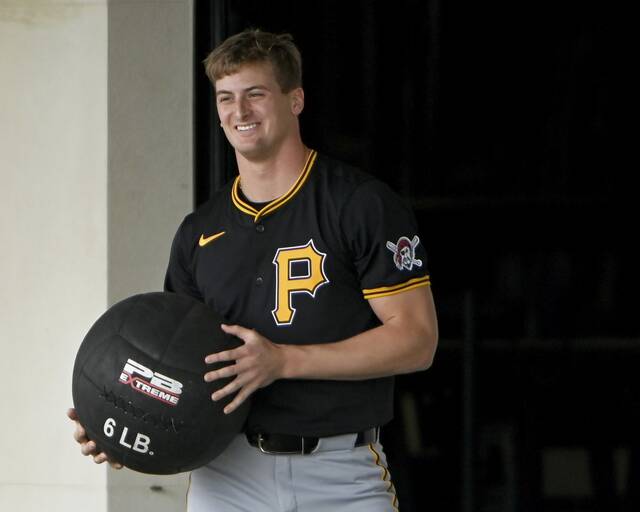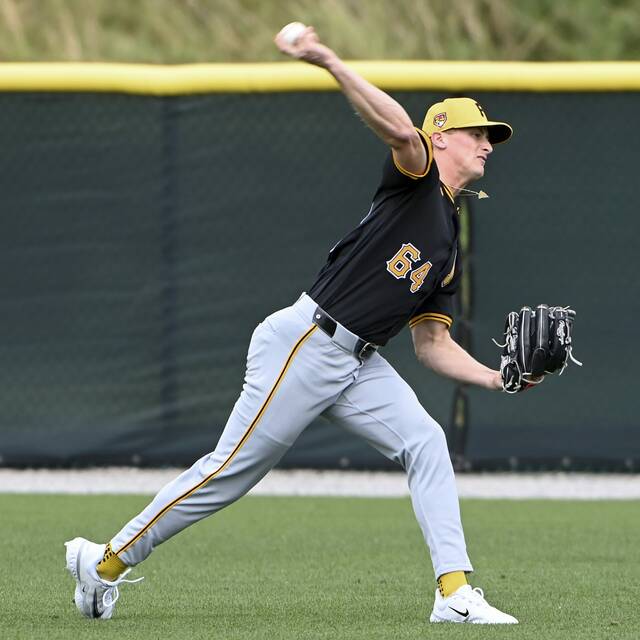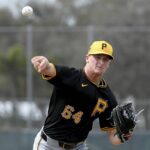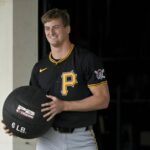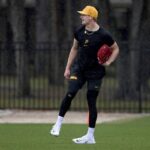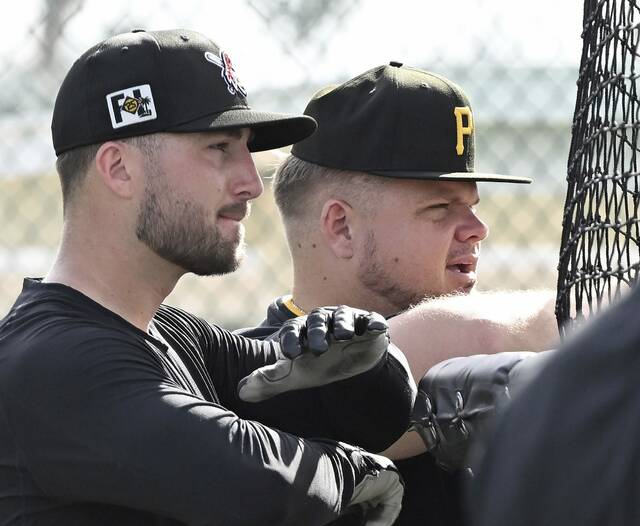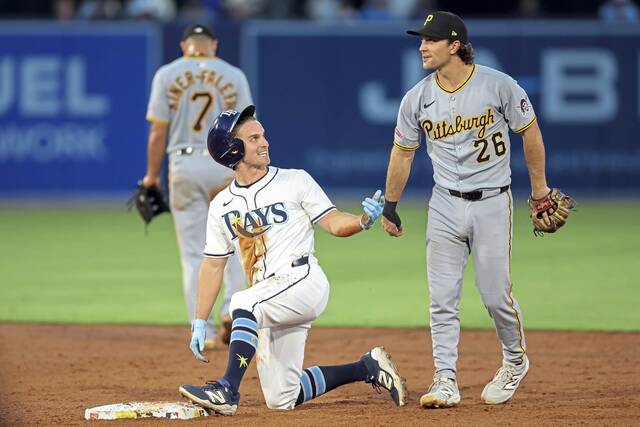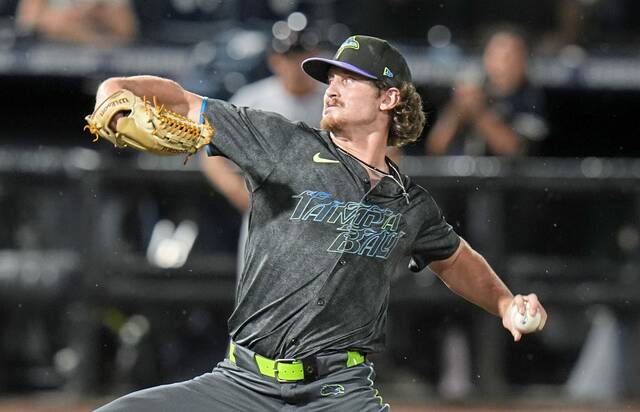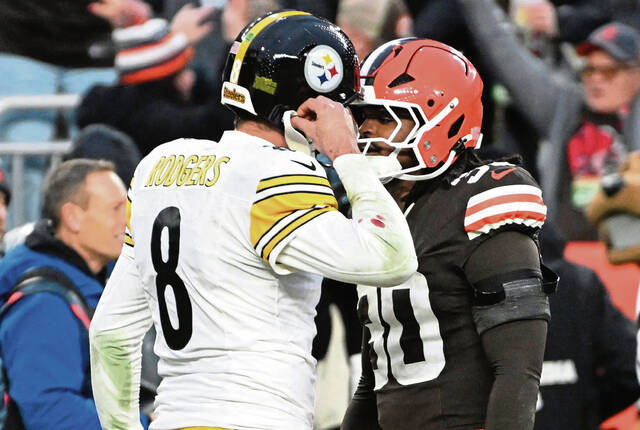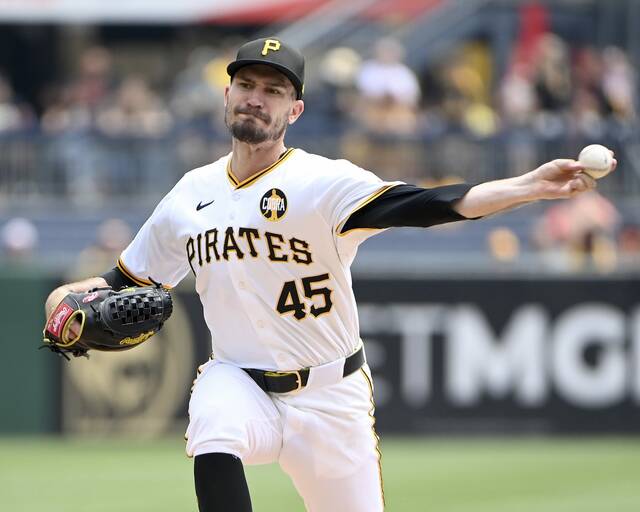BRADENTON, Fla. — When Quinn Priester wasn’t getting the results he wanted with the Pittsburgh Pirates, he sought confirmation of a time when his fastball command and velocity weren’t issues.
The 23-year-old right-hander found it by returning to the minor leagues, both physically and mentally. Deflated by a mid-August demotion, he started looking for evidence of his success.
“It’s tough to look at for anybody, a time when you were better than what you’re performing now,” Priester said. “I had definite video and a time period where I knew I was performing much better. When it was lower velo, I had video of when I had higher velo. Just seeing that I can do it but I’m not becomes frustrating.”
After an offseason spent doing some soul searching while working on rediscovering the athleticism in his delivery, the 2019 first-round pick is in competition for a spot in the starting rotation. Priester made his first start of spring training Wednesday when the Pirates played the Detroit Tigers in a Grapefruit League game at LECOM Park.
Priester said he felt “free and easy” in throwing two scoreless innings, striking out one without allowing hit while mixing his slider, sinker, four-seamer and curveball in throwing 13 of his 19 pitches for strikes. His velocity topped out at 93.9 mph on his four-seamer, but he was pleased that his slider averaged 87.7 mph.
“That’s kind of the goal,” Priester said. “Feel strong out there, feel athletic, fill it up, and we did that.”
Pirates manager Derek Shelton emphasized that Priester was efficient and stayed in the strike zone — “which is something that we need him to be” — and wants him to concentrate on showing consistency in his delivery and minimizing damage this spring. Priester had almost as many walks (27) as strikeouts (36) and surrendered 12 home runs in 10 major league games last season.
“We saw him have the damage last year where instead of one hitter or two hitters, we saw him expand into five hitters, and that’s a big inning,” Shelton said. “Being able to control the damage is about being consistent.”
Shelton said it was an objective for Priester to improve the fluidity of his delivery, a process that started last September and transitioned into the offseason. A Chicago native, Priester spent the winter in Florida working on his mechanics and revamping his delivery in an effort to increase the 92.8-mph velocity on his four-seamer. While he wouldn’t get specific about the changes, Priester focused on returning to being athletic on the mound and staying in the strike zone.
“I was able to get away with it throughout the minor leagues. I was able to find success not performing at the best that I could,” Priester said. “It kind of was disguising how good I could really be, in my opinion, but now the big leagues really forces that adaptation. Now I feel like I’ve taken a step towards being the best version of myself again. I think the best version of myself is the most athletic one.”
What he was able to get away with in the minors prior to his promotion became a problem in his major league debut. After tossing three scoreless, no-hit innings, Priester allowed seven runs on seven hits, including a pair of two-run home runs, in an 11-0 loss to the Cleveland Guardians on July 17 at PNC Park.
Priester went 0-3 with a 9.10 ERA in his first six starts for the Pirates, allowing seven homers with 23 strikeouts and 18 walks in 28 2/3 innings. Most troubling was the drop in velocity on his fastball, which was sitting in the low 90s and became too hittable. Opponents slashed .311/.400/.597 against him from July 17-Aug. 14.
That prompted the Pirates to option Priester to Triple-A Indianapolis, which was quite a comedown for the organization’s top pitching prospect entering the season.
“I think it just gave me a chance to reflect,” Priester said. “The first five starts weren’t how we wanted them to go, and that’s no secret. I was able to reflect that I made it to the big leagues, which is a pretty incredible accomplishment, and I can do it. Then I go down the rabbit hole of looking at this old video (and saying), ‘I made it to the big leagues when I wasn’t even this good.’ How can I get back to this point?”
One of the things Priester learned was that he was putting too much pressure on himself, which was affecting his performance. So he focused on trying to relax and enjoy the game again while at Indianapolis, hoping for a shot to return to the Pirates.
Priester was slightly better when he returned in mid-September, recording a 5.91 ERA and allowing five homers in four games, including a pair in bulk relief. Opponents still had an .838 OPS against him but batted .259.
“It sucks to suck, yeah. It doesn’t feel good when you’re not performing well or getting the results that you want, whether you feel you’re doing well,” Priester said. “So definitely wasn’t a good feeling coming away from last year, with the results that we had. We had better results at the end of the year to hold onto it for confidence — and I definitely have — and just that feel toward the end of the year where I had velo was a little up and at-bats were a little bit harder for the hitter.
“That’s the direction we’re trying to continue to trend on going into the offseason and continuing this year. It’s never going to end. It’s going to continue all year.”


